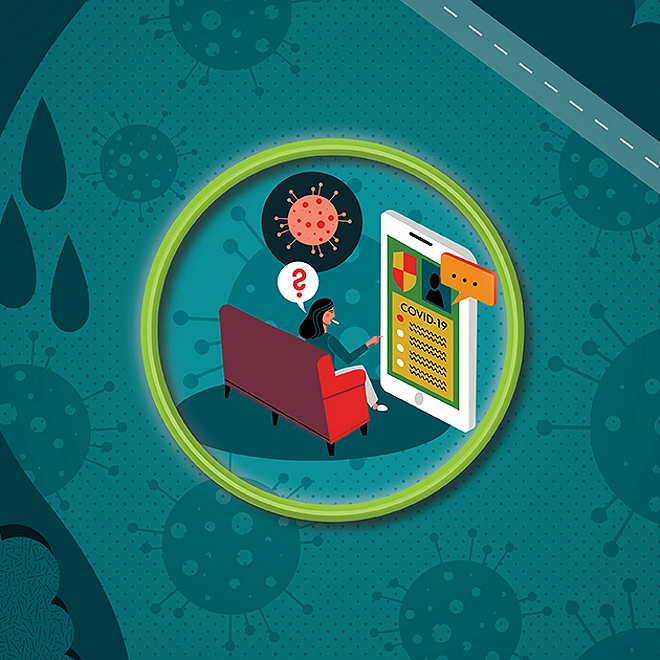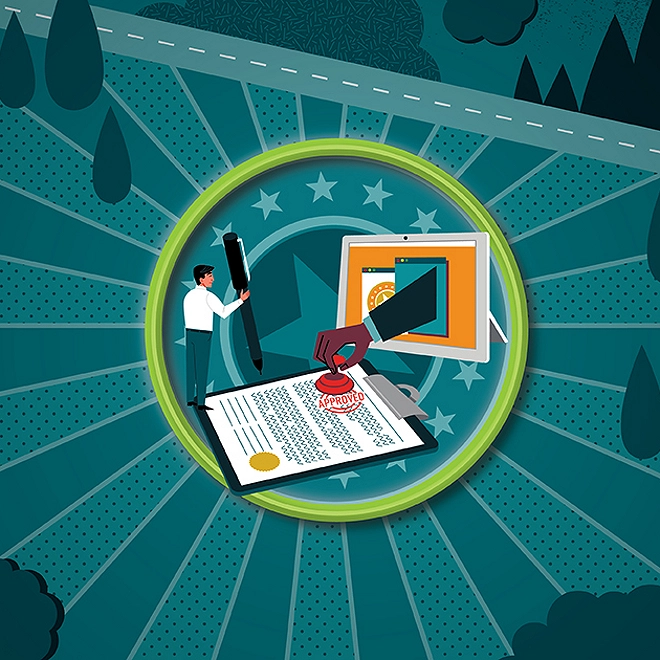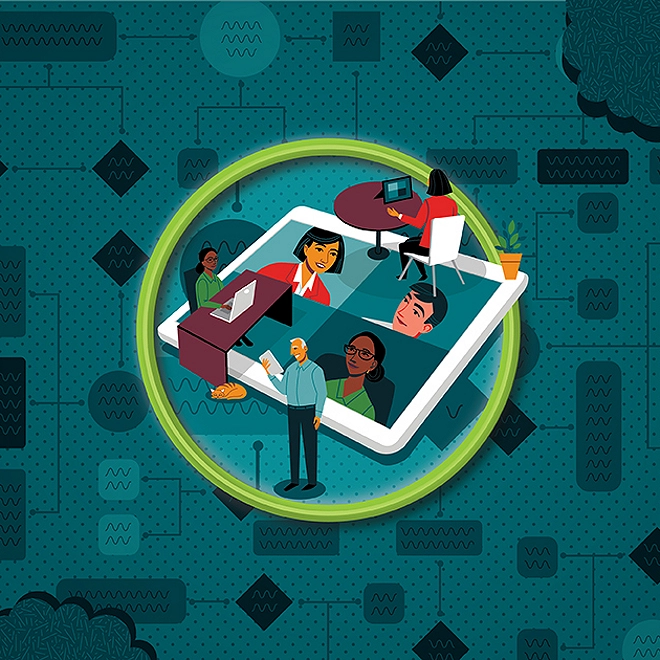Overview and introduction
Unprecedented 2020 ushered in new government trends
Each year, the top online searches provide a window into what was on people's minds. Not surprisingly, in 2020, “coronavirus” and “election results” were the top two searches and news phrases globally.1 As the world went into lockdown, “what day is it” searches hit an all-time high in April. In June, the query “what is systemic racism” peaked. Despite difficult economic times, people searched “how to donate” twice as much as “how to save money.”2
The year 2020 was tumultuous, and government stood front and center in not only confronting the biggest public health challenge in a century, but also dealing with major economic and social disruptions. New programs were rolled out seemingly overnight, and at a massive scale. Government is usually associated with incremental change, but 2020 was a year of discontinuity. The shifts we saw in government operations reflect the dramatic changes happening in the world at large.
The Deloitte Center for Government Insights’ Government Trends 2021 captures nine of the most transformative trends in government today. The report distills years of research on government operations, coupled with on-the-ground coverage of what is happening in the trenches right now.
The COVID-19 pandemic accelerated—in some cases, by years—trends such as the digitization of government. As the pandemic swept the globe, citizens looked to their governments to provide economic relief, contain the virus’ spread, and provide a steady flow of information. As citizens “rallied around the flag,”3 government became the most trusted institution globally for the first time in two decades.4 Governments with the most success in addressing the pandemic saw this reflected in high trust ratings.
In our 2020 Government Trends report, we highlighted trends that centered on using technology to better serve citizens. These trends included AI-augmented government, digital identities, behavioral nudges, anticipatory government, cloud, and putting the customer experience at center stage. When the pandemic hit, governments that were ahead of these trends proved far more able to effectively respond to the needs of the citizens.
Digital identity programs, for example, were immensely beneficial in delivering services during COVID-19, solving the “last mile” problem and rapidly providing benefits to those who needed them most. India’s Jan Dhan-Aadhaar-Mobile initiative, which links bank accounts to citizens’ mobile numbers and digital identity credentials, was used to seamlessly disburse COVID-19 cash relief.5
Meanwhile, cloud proved critical for not just meeting surges in demand but doing so remotely. In general, governments with strong digital infrastructure were able to rapidly adapt to the new virtual world, while those still relying on manual processes struggled mightily.
This year also saw a significant rise in the global movement for inclusion. Across industries, including government, policies are being revisited to ensure diversity, equity, and inclusion are reflected in public policy and public practice.
The nine government transformation trends
Since launching five years ago, the Deloitte Center for Government Insights has focused on the ongoing transformation of government. This trends report is informed by research, surveys, and Deloitte’s work in the trenches with governments worldwide, which give the center a unique horizon scanning capability.
The nine trends we highlight in this report have three things in common: First, they focus on government operations instead of policy issues such as immigration or health care. Second, each trend has moved beyond pilots and experiments and has begun to penetrate the heart of government. Third, they are all global in scope, happening in both developing and more economically advanced nations to varying degrees.
Accelerated digital government: COVID-19 brings the next generation of digitization to government.
The pandemic changed digital from “nice-to-have” to “must-have” for governments. To meet the surge in service demand while operating virtually, governments have accelerated their digital journey along three major dimensions: scaling digital infrastructure, creating a more digitally savvy workforce, and investing in citizen connectivity.
Seamless service delivery: Personalized, frictionless, and anticipatory.
Government agencies are increasingly providing personalized, frictionless, and proactive services to citizens. There are several avenues that governments are taking to achieve this vision of seamless service delivery: committing to fully digital services, designing proactive services around life events, and building infrastructure to support such seamless services. The goal: have government services approach the ease of the best online experiences.
Location liberation: Adaptive workplaces in government.
COVID-19 caused organizations to fundamentally change how they accomplished their respective missions. From remote work to telemedicine and online schools, the pandemic brought the future of government work into the present. This trend follows the emergence of adaptive workplaces, including approaches for managing a distributed workforce and delivering high-quality citizen services virtually.
Fluid data dynamics: Generating greater public value from data.
Data is assuming an elevated level of importance within and outside government. Public agencies are developing novel approaches to maximize the value of the data they hold, including appropriately sharing that data. Across the globe, the trend toward fluid, dynamic data is changing how data is being used and shared by government and its partners in academia, nonprofits, and the private sector.
Government as a cognitive system: Using hindsight, real-time data, and foresight to drive policy and decision-making.
The best governments are constantly learning, evolving, and making decisions—just like people do. When government understands itself as a “cognitive system,” it can take steps to increase how quickly it learns. This entails using data in new ways to gain insights from the past and present, and to make reliable projections about the future. This augmented learning and decision-making capability can create immense public value. Governments can design programs with an intelligence architecture in mind. The hindsight of past performance, coupled with real-time data in the present, can lead to optimal decisions for the future.
Agile government: Building greater flexibility and adaptability in the public sector.
The pandemic has highlighted the need for a fast, flexible, and mission-centric government, and many governments around the world have embraced the opportunity and shown they are up for the challenge. Governments had to make timely decisions—they needed to move fast. This agile imperative can be seen in many areas, including policymaking, regulation, procurement, and the workforce.
Government's broader role in cyber: How governments are adjusting to help secure cyber ecosystems.
A cyber hack that would once damage a single organization can now spread to threaten an organization’s partners, clients, or even an entire industry or a sector. Governments want to tap into a growing information ecosystem, but what about the risks? Reliable cybersecurity requires breaking down internal silos, recrafting external relationships, and making sure the public workforce comprises the best cyber talent.
Inclusive and equity-centered government: Embedding greater inclusion, diversity, and equity into the public sector.
As inclusion and equity issues come to the forefront, governments are focusing more on the underlying causes of systemic imbalances and questioning the fundamentals of how policies are developed, implemented, and assessed. Some of the global approaches being embraced include inclusive and equity-centered design, equitable access to public goods, data sovereignty and equity, and cocreation and citizen engagement.
Sustaining public trust in government: Strengthening trust in government institutions, systems, and processes.
In many parts of the world, trust in government skyrocketed in 2020. In some countries, however, trust in government was close to an all-time low. Such trust—and increasingly social trust or social capital—is crucial to managing challenging economic and public health issues.6 Governments are working toward making trust a core component, tackling information manipulation, weaving in greater transparency, and building trust in government’s digital systems, services, and data initiatives.
Understanding these trends is the first step in navigating the journey ahead.
Government & Public Services
Deloitte’s Government & Public Services practice—our people, ideas, technology and outcomes—is designed for impact. Our team of over 15,000+ professionals bring fresh perspective to help you anticipate disruption, reimagine the possible, and fulfill your mission promise.



